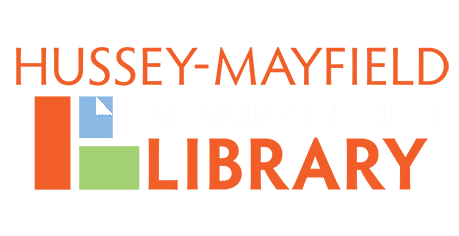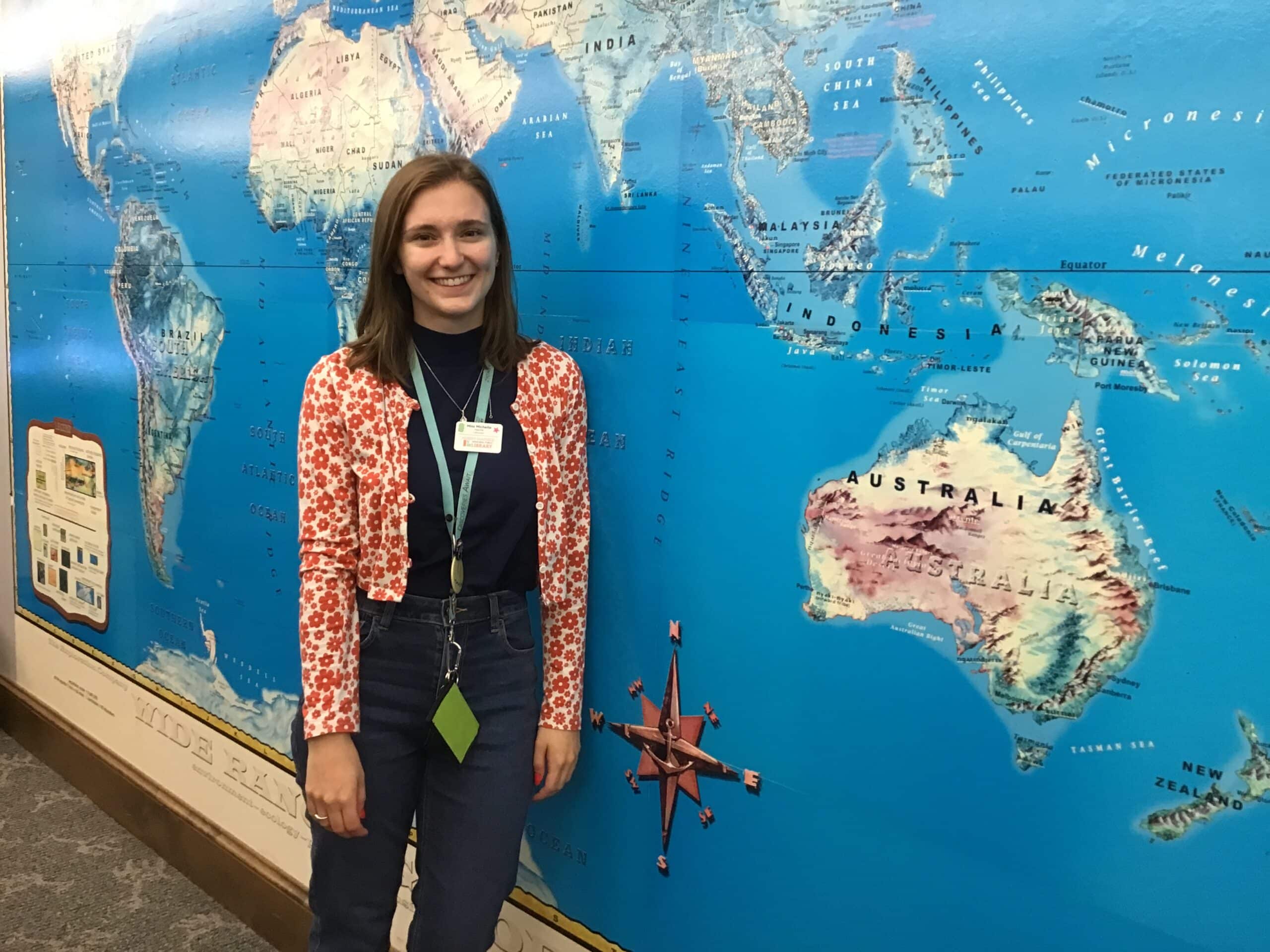
Sep 06, 2023 Reading a Book For Every Country
By: Michelle Stallman, Youth Services Librarian
Last year, I saw a post about book lovers who try to read at least one book written by an author from each and every country in the world. While I do love to read, that seemed like quite a feat. Plus, I mostly read children’s literature. So I retooled the challenge to be more suited to my interests: I decided that in my free time, I would try to read a picture book that takes place in every country in the world. Depending on who you ask, there are around 195 countries, though I chose to include some that are disputed territories, or that are part of a larger nation, like Scotland or Wales. All in all, I ended up reading 206 books!
In order to accomplish this task, I knew that I would have to look through a lot of different sources. While there were many I used to find certain books, I found these two websites to be the most helpful, leading me to a ton of the books on my list:
- Diverse Book Finder: https://diversebookfinder.org/
- Kids Travel Books: https://kidstravelbooks.com/
I wanted to find books written by people from the country/culture featured in the book, but this was often not possible, especially when it came to some of the less populous countries. About a quarter of the books that I read were Own Voices books, meaning they were written by actual members of the culture they’re focused on. In some cases, I struggled to find books about a country at all, so I had to separately research the country to learn more about what it’s known for. This took a while, but I learned a lot more than I expected. One of the other challenges I encountered was that many small nations simply don’t have a lot of literature about them, especially not for children. Therefore, I often had to find books in which one section took place in the country I was interested in, like Wonderful Houses Around the World, which had a section about houses in Togo.
Almost all of the books I read can be found in Evergreen Indiana, which means this was a great opportunity to put books on hold from other libraries. There are over 100 Indiana libraries that are a part of Evergreen, and you can get books from their collections, too, whether we own a copy at Hussey-Mayfield Memorial Public Library or not.
Follow this link or the full list of all of the books I read, as well as what country they represented. Below are some of my favorite books I read while completing this project, divided by continent. Click on the titles to read more about each book or place them on hold in Evergreen Indiana. Please note that some of these books take place in historical time periods or in places currently experiencing a lot of strife, so some of them may include more serious themes.
Africa
Burundi: The Long Jump: The Story of Jean-Baptiste Alaize by Francesca Cavallo
At only three years old, Jean-Baptiste Alaize, a native of Burundi, lost both his right leg and parents during the country’s civil war, leaving him surviving with only one leg in an orphanage. At the age of 7, he was adopted by a French family and given a prosthesis so that he could walk again. In school, he took up track and field, where he learned to use his prosthesis to his advantage. Soon, his favorite event became the long jump because it makes him feel like he’s flying.
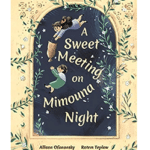 Morocco: A Sweet Meeting on Mimouna Night by Allison Ofanansky
Morocco: A Sweet Meeting on Mimouna Night by Allison Ofanansky
Another holiday I’d never heard of, this book depicts the friendship between Muslim and Jewish Moroccans during Mimouna. Moroccan Jews celebrate this holiday at the end of Passover with food and fun. Miriam and her family need flour to make moufletot pancakes, but there’s no flour in the house. Luckily, their Muslim neighbors have some for them to use.
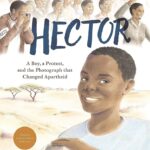 South Africa: Hector: A Boy, A Protest, and the Photograph that Changed Apartheid by Adrienne Wright
South Africa: Hector: A Boy, A Protest, and the Photograph that Changed Apartheid by Adrienne Wright
Hector is the story behind a picture taken at an Apartheid-related protest in 1976. Featuring a young boy named Hector Pieterson, this photo became world famous for exposing the horrors of Apartheid, making many people aware of the problems Black South Africans were facing on a daily basis. This book tells the story of how Hector may have gotten to that protest, as well as the reasons why it occurred.
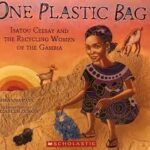 The Gambia: One Plastic Bag: Isatou Ceesay and the Recycling Women of the Gambia by Miranda Paul and Elizabeth Zunon
The Gambia: One Plastic Bag: Isatou Ceesay and the Recycling Women of the Gambia by Miranda Paul and Elizabeth Zunon
Isatou Ceesay was an ordinary woman living in The Gambia, who noticed that there was an abundance of plastic bags littering the roads of her village, Njau. These bags not only polluted the environment, but they were a breeding ground for diseases and mosquitoes, as well as a danger to local livestock and crops. She was disturbed by what she saw and decided that she’d make a change. She took the plastic bags and created goods out of them, like bags and baskets, and sold them for a profit. Soon, she had a team called The Recycling Women behind her, improving their livelihoods and environment.
Asia
China: Shanghai Sukkah by Heidi Smith Hyde
Marcus and his family have fled Europe because of the dangers of the Holocaust, which takes him all the way from Berlin to Shanghai. Once there, he encounters a whole new culture, but with a little bit of help, he learns how he can blend his Jewish culture with Chinese culture just in time for the Sukkot harvest festival.
Kuwait: The White Nights of Ramadan by Maha Addasi
During the holy month of Ramadan, there are three days in the middle of the month that are specially celebrated in the Persian Gulf. These nights, called “the three whites” include the day of the full moon, the day before it, and the day after. On these days, children go from house to house singing songs and collecting candy from their neighbors in bags that they’ve decorated themselves. While I knew a lot about Ramadan, this was a particular tradition that I had never heard of. I found it especially interesting because it’s only celebrated in a few select countries.
Myanmar: I See the Sun in Myanmar (Burma) by Dedie King and Judith Inglese
A great introduction to Buddhist culture and customs, this book is all about Aye Aye’s day and how her beliefs and environment contribute to making it unique. She introduces the reader to the concept of “metta,” which is all about kindness and positive energy. In order to practice metta, Aye Aye recites positive phrases throughout her day. This book provides a lovely and calming look into another culture.
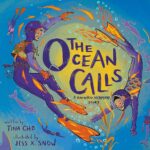 South Korea: The Ocean Calls: A Haenyeo Mermaid Story by Tina Cho
South Korea: The Ocean Calls: A Haenyeo Mermaid Story by Tina Cho
Based on real women on Jeju Island, this book chronicles a girl named Dayeon’s dreams to one day be a haenyeo, or female diver, just like her grandmother. These brave women dive over 30 feet down into the ocean to gather abalone and sea urchins, without using any scuba gear or oxygen masks. They dive down for a minute at a time since they have to hold their breath, and they collect the shellfish, which they later sell for a profit. Today, the haenyeo are mostly older women, as the tradition is dying out. But, as Dayeon learns, the sea has many lessons to teach us.
Uzbekistan: The Amazing Discoveries of Ibn Sina by Fatima Sharafeddine
This nonfiction book tells the story of Ibn Sina, a great thinker born over a thousand years ago. He was well-known in his time for his amazing discoveries in many fields, including chemistry, education, physics and astronomy, just to name a few. Some of these many discoveries included that sound travels faster than light, that disease can be spread through contaminated water, and that children start learning from the time they’re born, not when they’re old enough to start school. This was a fascinating look at a historical figure that I’d never heard of before.
Europe
France: The Grand Mosque of Paris: A Story of How Muslims Rescued Jews during the Holocaust by Karen Gray Ruelle
During World War II, Jews across Europe had to flee as quickly as they could. When the Nazis occupied Paris, Parisian Jews need places to hide too. This book tells the little-known story of how local Muslims helped hide Jews in this dangerous time.
Italy: Pippo the Fool by Tracey E. Fern
In 1400s Florence, Italy, the beautiful Cathedral of Santa Maria del Fiore was being built, but there was a big problem. It didn’t yet have a dome. The city invited all of its finest craftsmen to compete for the chance to design the dome. Filippo Brunelleschi, who was better known as Pippo the Fool, had a brilliant idea. This book tells the story of Brunelleschi’s fantastic Duomo and its unlikely origin story.
 Netherlands: Boxes for Katje by Candace Fleming
Netherlands: Boxes for Katje by Candace Fleming
In the wake of World War II, many towns in Holland were struggling and having to go without many daily necessities. One day, Katje and her fellow townspeople receive a box all the way from America full of goodies, like soap and chocolate. A Hoosier named Rosie from Mayfield, Indiana, had sent the package to try to help out European kids who had been effected by the war. This begins a sequence of packages and letters between the two children who live in different places but are connected nonetheless.
United Kingdom: Evelyn the Adventurous Entomologist: The True Story of a World-Traveling Bug Hunter by Christine Evans
This book tells the true story of Evelyn Cheesman, a young girl who loved to play in the dirt, even though everyone told her she should be neat, clean, and ladylike. Evelyn loved collecting glow worms, so when she was older, she pursued her dream of being an entomologist. She was in charge of the London Zoo insect house, and she even traveled the world collecting specimens and discovering species.
North America
Cuba: All the Way to Havana by Margarita Engle
A boy and his family have to travel from the country into Havana, and along the way, we get to see all the unique sights sounds of the island. He shows us the many beautifully colored houses in the city, as well as the many classic cars that travel the streets. This book was a compelling look into the culture of Cuba, especially for those that aren’t familiar.
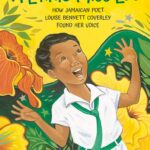 Jamaica: A Likkle Miss Lou: How Jamaican Poet Louise Bennett Coverley Found Her Voice by Nadia Hohn and Eugenie Fernandes
Jamaica: A Likkle Miss Lou: How Jamaican Poet Louise Bennett Coverley Found Her Voice by Nadia Hohn and Eugenie Fernandes
This picture biography tells the story of Louise Bennett Coverley, a poet and entertainer who became internationally famous during her lifetime. She used Jamaican English, better known as patois, in her works, which made the language more well-known around the world. She paved the way for singers like Bob Marley to sing in patois.
Saint Lucia: The Field by Baptiste Paul
Soccer, or futbol, is popular around the world, including in the Caribbean. On the island of St. Lucia, a boy and his friend express their love of the game while playing on an increasingly wet and muddy field. The book is interspersed with Creole words and gives you a great feeling of fun.
Trinidad and Tobago: Drummer Boy of John John by Mark Greenwood
It’s almost Carnival time in John John, Trinidad, and Winston “Spree” Simon desperately wants to be part of the best band in the parade. After all, the best band gets free rotis from the Roti King. While Winston is walking through the local junkyard, he discovers that he might have the perfect instrument to play in the parade. This book tells the story of Winston “Spree” Simon, who was instrumental in the creation of the steel drum. I learned a lot from this story, including that rotis were originally brought to the Caribbean by Indian laborers, and they have been a staple in the region ever since.
Oceania
French Polynesia: Kupe and the Corals by Jacqueline L. Padilla-Gamino
Polynesia is filled with marine life of many kinds, and Kupe wants to learn all about the corals that live in the ocean near his home. In order to do this, he meets with a scientist who tells him all about why corals are important. I learned a lot from this book about both coral reefs and Polynesian culture.
New Zealand: The Little Kiwi’s New Year by Nikki Slade-Robinson
The Maori New Year is here, and Little Kiwi needs to tell all of her friends this exciting update. Maori New Year’s celebrations include many traditions, some of which are similar to others found around the world. Kiwi’s friends each join her in her exuberance to see the official start to the new year in the stars.
South America
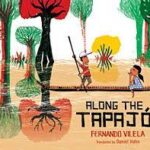 Brazil: Along the Tapajos by Fernando Vilela
Brazil: Along the Tapajos by Fernando Vilela
The Tapajos River in rural Brazil floods every year, and that means that Caua and Inae have to leave for higher ground. They have to take apart everything and take all their belongings out of the house. Their whole village lies on stilts because of the flooding, and they have to use boats to get around. This was a fascinating look into a way of live I’ve never heard about before.
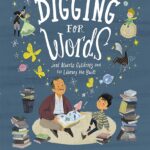 Colombia: Digging for Words: Jose Alerto Gutierrez and the Library He Built by Angela Burke Kunkel
Colombia: Digging for Words: Jose Alerto Gutierrez and the Library He Built by Angela Burke Kunkel
In the barrio of La Nueva Gloria, in the city of Bogata, a man named Jose was a trash collector who didn’t have a lot of money. One day, he found a discarded copy of Anna Karenina in a wealthy home’s trash. He was inspired and began to collect other books that he found in the garbage to create his own library for people in his neighborhood to visit.
Paraguay: Ada’s Violin: The Story of the Recycled Orchestra of Paraguay by Susan Hood
Based on the real story of The Recycled Orchestra of Paraguay, this book is about Ada, who lives in the town of Cateura. Built on a landfill, the town doesn’t have a lot of money, and many have to scavenge through the trash to make a living. Ada learns of a man named Favio Chavez, who is making instruments out of the trash and teaching local kids to play them. She and other children begin to learn about the wonderful world of music, and their community is changed.
 Peru: Sharuko: El Arqueolog Peruano / Peruvian Archaeologist by Julio C. Tello
Peru: Sharuko: El Arqueolog Peruano / Peruvian Archaeologist by Julio C. Tello
This biography tells the story of Julio Tello, an Indigenous boy in Peru, who loved exploring the burial grounds and caves near his home. His nickname became Sharuko, which means brave, because he explored the Andes without fear. Julio later went to medical school, where he decided that he was going to make the history that he loved as a child more widely known across his country. It had long been though that Peruvian culture had been introduced from other countries, but he set out to prove that it had existed for thousands of years.
